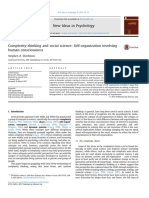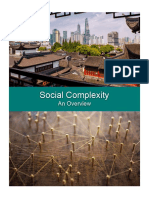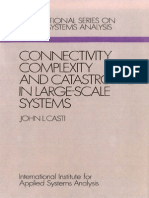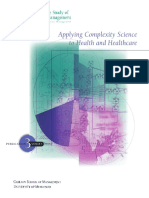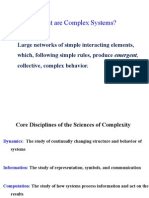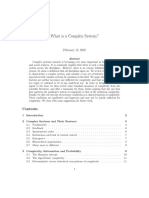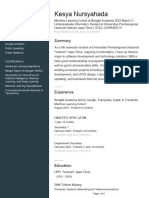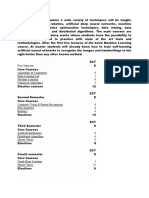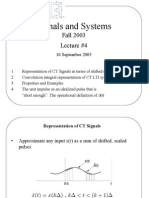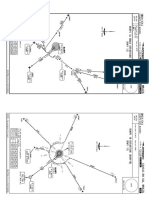100% found this document useful (8 votes)
986 views20 pagesComplexity Explained
The document provides an overview of complexity science and complex systems. It discusses that complex systems consist of many interacting components that can self-organize and exhibit unexpected emergent behaviors. Properties of complex systems change dynamically over time in nonlinear and unpredictable ways, and they have the ability to adapt and evolve through self-organization without centralized control. The document covers key concepts such as emergence, dynamics, self-organization, and adaptation as it relates to studying complex systems using an interdisciplinary approach and various methods.
Uploaded by
NatashaSinghCopyright
© © All Rights Reserved
We take content rights seriously. If you suspect this is your content, claim it here.
Available Formats
Download as PDF, TXT or read online on Scribd
100% found this document useful (8 votes)
986 views20 pagesComplexity Explained
The document provides an overview of complexity science and complex systems. It discusses that complex systems consist of many interacting components that can self-organize and exhibit unexpected emergent behaviors. Properties of complex systems change dynamically over time in nonlinear and unpredictable ways, and they have the ability to adapt and evolve through self-organization without centralized control. The document covers key concepts such as emergence, dynamics, self-organization, and adaptation as it relates to studying complex systems using an interdisciplinary approach and various methods.
Uploaded by
NatashaSinghCopyright
© © All Rights Reserved
We take content rights seriously. If you suspect this is your content, claim it here.
Available Formats
Download as PDF, TXT or read online on Scribd
/ 20








